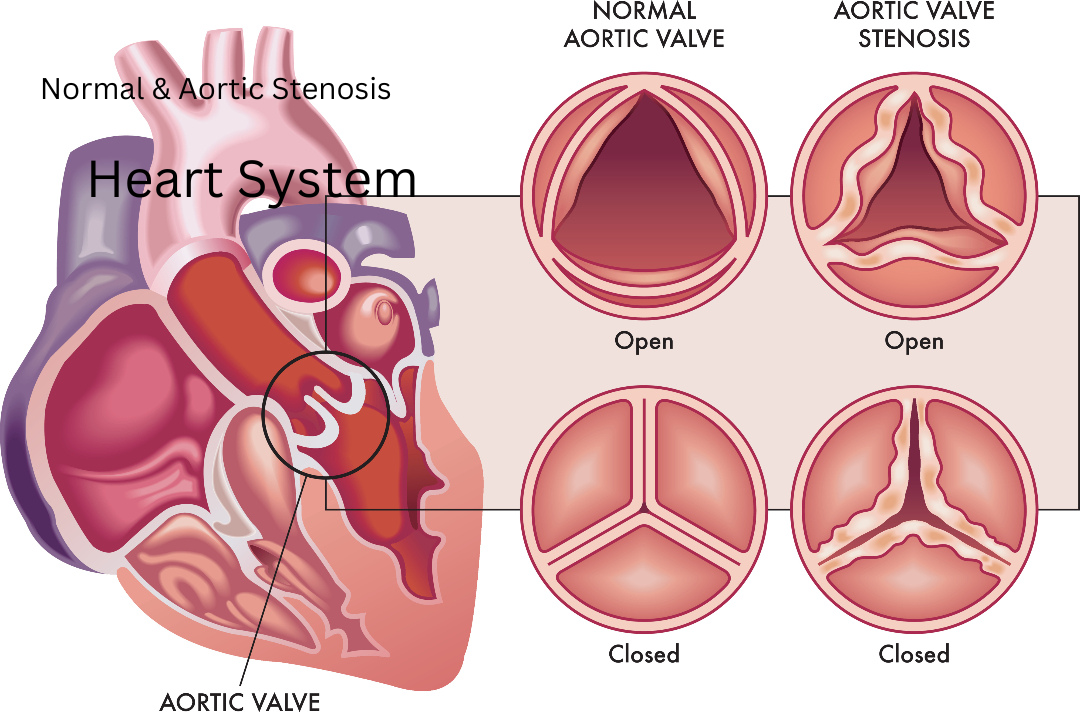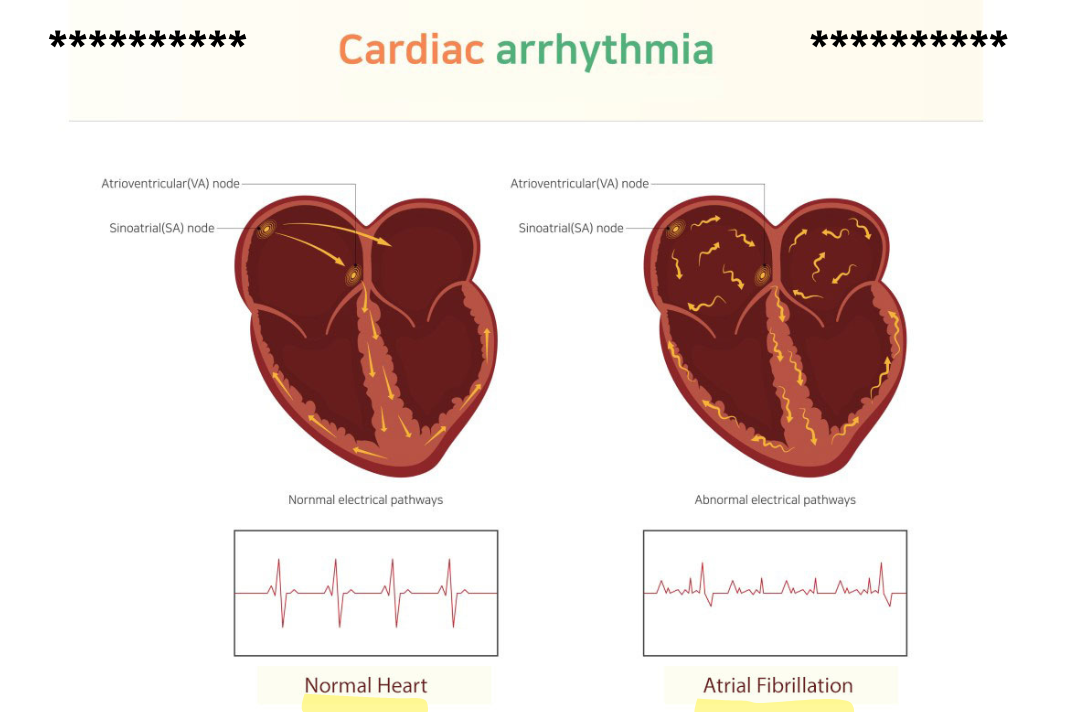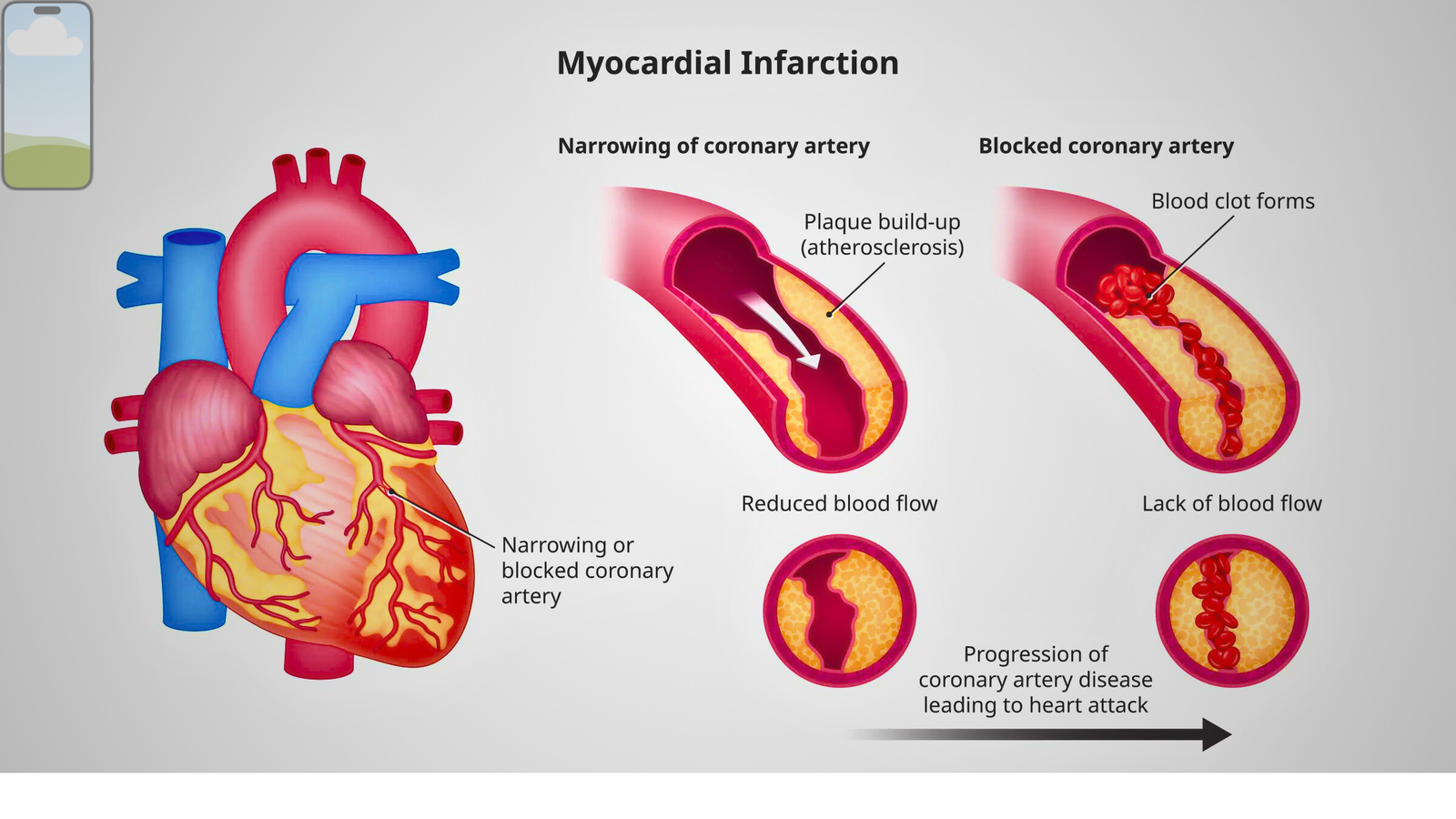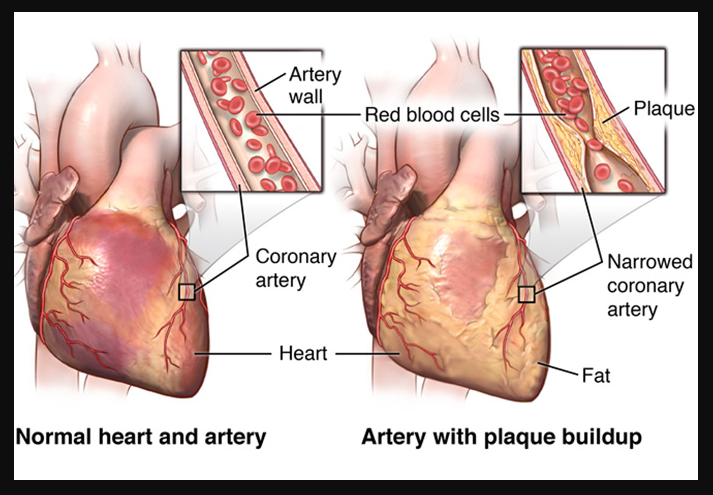Aortic Stenosis is like a traffic jam in our heart’s highway. In simple terms, it happens when the valve controlling the blood flow out of the heart becomes narrow, like a road getting squeezed. This narrowing makes it challenging for the heart to pump blood smoothly, creating a kind of roadblock. Imagine a gatekeeper slowing down the exit at a school, causing a delay. Similarly, in aortic stenosis, the valve’s narrowing delays the blood flow, making the heart work harder. This condition may make the heart feel like it’s lifting a heavy load, trying to push blood through a tight space. Understanding aortic stenosis is like decoding a puzzle, recognizing how the heart copes with its own traffic challenges.
Understanding the Causes of Aortic Stenosis
Aortic Stenosis, like a puzzle in our hearts, has its reasons. Let’s explore these causes in a way that you can easily understand.
Causes of Aortic Stenosis
- Wear and Tear – The Valve’s Journey: Picture the heart’s valve as a sturdy gate. Over time, just like a favorite toy or a well-loved book, this valve can undergo wear and tear. The valve might become stiff and narrow, like a gate rusting with time. This natural aging process can contribute to aortic stenosis, making it harder for blood to flow freely.
- Born This Way – A Unique Blueprint: Sometimes, aortic stenosis is like having a unique blueprint. Some people are born with valves that have fewer leaflets or are naturally thickened. It’s like having a gate that’s a bit different from others. This uniqueness can lead to aortic stenosis as the valve may not open and close as smoothly as it should.
- Calcium Buildup – The Hardening Puzzle Piece: Imagine building blocks in the heart, and sometimes, these blocks can get too hard. Calcium, like building block glue, can stick to the valve, causing it to harden. This hardening is like adding an extra layer to our gate, making it difficult for the heart to pump blood without obstacles.
- Rheumatic Fever – Uninvited Guests: Sometimes, aortic stenosis can be like having uninvited guests at a party. A past infection, such as rheumatic fever, can leave behind scars on the valve. These scars act like bumps in the road, making it challenging for the blood to smoothly pass through.
How Can We Help?
Understanding the causes of aortic stenosis is like solving a mystery, and here’s how we can be part of the solution:
- Healthy Habits – Taking Care of the Heart’s Home: Eating well and staying active is like keeping the heart’s home in top shape. These healthy habits can contribute to preventing wear and tear on the valve, ensuring it continues to function smoothly.
- Regular Check-ups – The Heart’s Maintenance Check: Like going to the dentist for check-ups, visiting the doctor for heart check-ups is essential. They can keep an eye on the valve’s health and catch any potential issues early, ensuring the heart’s gate stays open and functional.
- Awareness – Listening to the Heart’s Beat: Being aware of our body is like listening to the heart’s beat. If something feels off, it’s essential to share it with a grown-up. They can help figure out if it’s just a small puzzle piece out of place or if there’s a need for further investigation.
Symptoms of Aortic Stenosis
Aortic Stenosis, like a message from our heart, can speak through various signs. Let’s explore these symptoms in a way that a sixth-grader can easily understand.
Recognizing the Symptoms of Aortic Stenosis
- Feeling Tired – The Heart’s Whisper: Sometimes, aortic stenosis is like a whispered message from the heart, making us feel more tired than usual. It’s like the heart is working extra hard to pump blood through the narrow valve, leaving us feeling a bit worn out.
- Chest Pain – A Gentle Knock: Imagine your heart knocking gently on your chest. Aortic stenosis can sometimes cause chest pain or discomfort. It’s like the heart’s way of saying, “Hey, something might be going on, pay attention!”
- Shortness of Breath – Catching Our Breath: Aortic stenosis is like a playful game where it might feel harder to catch our breath, even if we’re not running around. It’s like the heart is asking for a bit more air to help it pump blood through the narrow valve.
- Dizziness – A Spinning Playground: Feeling dizzy is another way aortic stenosis can show itself. It’s like being on a spinning playground without the fun part. The heart, working against the narrow valve, can make us feel off-balance.
- Heart Palpitations – The Heart’s Flutter: Sometimes, the heart might flutter or beat irregularly, like a bird taking flight. This fluttering feeling is a symptom of aortic stenosis, indicating that the heart is working extra hard to overcome the narrowing in the valve.
How Can We Listen to Our Heart?
Understanding the symptoms of aortic stenosis is like tuning into our heart’s messages. Here’s how we can be good listeners:
- Tell a Grown-Up – Sharing the Heart’s Story: If you ever feel these sensations, it’s crucial to tell a grown-up. They can help figure out if it’s just a small hiccup or if there’s a need to visit the doctor. Sharing the heart’s story is like creating a note for the doctors to understand.
- Stay Calm – The Heart’s Calming Lullaby: Sometimes, taking a few deep breaths can help calm the heart down. It’s like singing a lullaby to the heart, telling it to slow down and find its steady rhythm.
- Regular Heart Check-ups – Tuning the Melody: Just as we tune musical instruments regularly, visiting the doctor for heart check-ups helps keep the melody of our hearts in harmony. They can listen to our heart’s song and ensure it’s playing the right notes.
Treatment of Aortic Stenosis
Aortic Stenosis, like a puzzle in our hearts, has solutions to help it find the right rhythm. Let’s explore these treatments in a way that a sixth-grader can easily understand.
Ways to Treat Aortic Stenosis
- Medicines – The Heart’s Helpers: When aortic stenosis knocks on our heart’s door, doctors might prescribe medicines to lend a helping hand. These medicines are like tiny helpers inside our body, working to make the heart’s job easier. They can ease the workload, allowing the heart to pump blood more smoothly.
- Balloon Valvuloplasty – A Gentle Stretch: Sometimes, doctors use a procedure called balloon valvuloplasty to give the heart’s valve a gentle stretch. It’s like inflating a balloon to make it a bit bigger. This procedure helps widen the narrow valve, allowing blood to flow more freely.
- Valve Replacement – A Heart’s New Door: In some cases, when the heart’s valve needs more than a stretch, doctors might replace it with a new one. It’s like getting a new door for our heart’s house. This procedure ensures that the blood flows smoothly, just like a well-functioning gate.
- TAVR – A Minimally Invasive Adventure: TAVR, or transcatheter aortic valve replacement, is like a special adventure for the heart. Instead of opening the chest, doctors use a small incision, like a secret passage, to replace the valve. It’s a bit like giving the heart a makeover without too much disruption.
How Can We Help?
Understanding the treatment for aortic stenosis is like knowing the tools in a repair kit. Here’s how we can be a part of the solution:
- Support: Just as friends support each other, people dealing with aortic stenosis need our understanding. Encouraging them to take their medicines and follow their doctor’s advice is like being a good friend to their hearts.
- Healthy Lifestyle: Eating well and staying active is not just fun; it’s like giving our hearts a daily dose of happiness. By making healthy choices, we help our hearts stay strong and less likely to face challenges.
- Regular Check-ups – The Heart’s Maintenance Check: Like going to the dentist for check-ups, visiting the doctor for heart check-ups is essential. They can keep an eye on the heart’s health and catch any potential issues early, ensuring the heart’s gate stays open and functional.











I enjoyed it just as much as you will be able to accomplish here. You should be apprehensive about providing the following, but the sketch is lovely and the writing is stylish; yet, you should definitely return back as you will be doing this walk so frequently.
The reputation of the website will surely see an improvement in the near future as a result of the high-quality content and the active involvement of the administrator.
helloI like your writing very so much proportion we keep up a correspondence extra approximately your post on AOL I need an expert in this space to unravel my problem May be that is you Taking a look forward to see you
Its like you read my mind You appear to know so much about this like you wrote the book in it or something I think that you can do with a few pics to drive the message home a little bit but instead of that this is excellent blog A fantastic read Ill certainly be back
My brother suggested I might like this blog He was totally right This post actually made my day You can not imagine simply how much time I had spent for this info Thanks
helloI really like your writing so a lot share we keep up a correspondence extra approximately your post on AOL I need an expert in this house to unravel my problem May be that is you Taking a look ahead to see you
I am not sure where youre getting your info but good topic I needs to spend some time learning much more or understanding more Thanks for magnificent info I was looking for this information for my mission
I was recommended this website by my cousin I am not sure whether this post is written by him as nobody else know such detailed about my difficulty You are wonderful Thanks
What i dont understood is in reality how youre now not really a lot more smartlyfavored than you might be now Youre very intelligent You understand therefore significantly in terms of this topic produced me personally believe it from a lot of numerous angles Its like women and men are not interested except it is one thing to accomplish with Woman gaga Your own stuffs outstanding Always care for it up
Hello Neat post Theres an issue together with your site in internet explorer would check this IE still is the marketplace chief and a large element of other folks will leave out your magnificent writing due to this problem
I do believe all the ideas youve presented for your post They are really convincing and will certainly work Nonetheless the posts are too short for novices May just you please lengthen them a little from subsequent time Thanks for the post
Simply wanted to let you know that your article is phenomenal. The clarity of your post is impeccable, and I could tell you are an authority on the subject. Permission granted, I would like to subscribe to your feed in order to be notified of future posts. Many thanks, and please keep up the excellent work.
Thank you for the auspicious writeup It in fact was a amusement account it Look advanced to more added agreeable from you By the way how could we communicate
Hi Neat post There is a problem along with your website in internet explorer would test this IE still is the market chief and a good section of other folks will pass over your magnificent writing due to this problem
I do agree with all the ideas you have introduced on your post They are very convincing and will definitely work Still the posts are very short for newbies May just you please prolong them a little from subsequent time Thank you for the post
I was recommended this website by my cousin I am not sure whether this post is written by him as nobody else know such detailed about my trouble You are amazing Thanks
helloI really like your writing so a lot share we keep up a correspondence extra approximately your post on AOL I need an expert in this house to unravel my problem May be that is you Taking a look ahead to see you
Wonderful web site Lots of useful info here Im sending it to a few friends ans additionally sharing in delicious And obviously thanks to your effort
I don’t think the title of your article matches the content lol. Just kidding, mainly because I had some doubts after reading the article.
you are in reality a just right webmaster The site loading velocity is incredible It seems that you are doing any unique trick In addition The contents are masterwork you have performed a wonderful task on this topic
Its like you read my mind You appear to know so much about this like you wrote the book in it or something I think that you can do with a few pics to drive the message home a little bit but other than that this is fantastic blog A great read Ill certainly be back
Its like you read my mind You appear to know so much about this like you wrote the book in it or something I think that you can do with a few pics to drive the message home a little bit but other than that this is fantastic blog A great read Ill certainly be back
helloI like your writing very so much proportion we keep up a correspondence extra approximately your post on AOL I need an expert in this space to unravel my problem May be that is you Taking a look forward to see you
Thanks for sharing. I read many of your blog posts, cool, your blog is very good.
I do believe all the ideas youve presented for your post They are really convincing and will certainly work Nonetheless the posts are too short for novices May just you please lengthen them a little from subsequent time Thanks for the post
Thanks I have just been looking for information about this subject for a long time and yours is the best Ive discovered till now However what in regards to the bottom line Are you certain in regards to the supply
I have been surfing online more than 3 hours today yet I never found any interesting article like yours It is pretty worth enough for me In my opinion if all web owners and bloggers made good content as you did the web will be much more useful than ever before
Magnificent beat I would like to apprentice while you amend your site how can i subscribe for a blog web site The account helped me a acceptable deal I had been a little bit acquainted of this your broadcast offered bright clear idea
I do agree with all the ideas you have introduced on your post They are very convincing and will definitely work Still the posts are very short for newbies May just you please prolong them a little from subsequent time Thank you for the post
Somebody essentially help to make significantly articles Id state This is the first time I frequented your web page and up to now I surprised with the research you made to make this actual post incredible Fantastic job
helloI like your writing very so much proportion we keep up a correspondence extra approximately your post on AOL I need an expert in this space to unravel my problem May be that is you Taking a look forward to see you
Thank you for the auspicious writeup It in fact was a amusement account it Look advanced to more added agreeable from you By the way how could we communicate
What i do not understood is in truth how you are not actually a lot more smartlyliked than you may be now You are very intelligent You realize therefore significantly in the case of this topic produced me individually imagine it from numerous numerous angles Its like men and women dont seem to be fascinated until it is one thing to do with Woman gaga Your own stuffs nice All the time care for it up
I do not even know how I ended up here but I thought this post was great I do not know who you are but certainly youre going to a famous blogger if you are not already Cheers
Its like you read my mind You appear to know so much about this like you wrote the book in it or something I think that you can do with a few pics to drive the message home a little bit but other than that this is fantastic blog A great read Ill certainly be back
Its like you read my mind You appear to know so much about this like you wrote the book in it or something I think that you can do with a few pics to drive the message home a little bit but instead of that this is excellent blog A fantastic read Ill certainly be back
Batida maravilhosa, gostaria de aprender enquanto você altera seu site, como posso me inscrever em um blog? A conta me ajudou a fazer um acordo aceitável. Eu estava um pouco ciente disso, sua transmissão forneceu uma ideia clara e clara
O que eu não entendo é na verdade como você não é realmente muito mais querido do que é agora Você é muito inteligente Você sabe, portanto, significativamente no caso deste tópico que me produziu individualmente, imagine-o de vários ângulos diferentes É como homens e mulheres não pareça fascinado até que seja algo a ver com Mulher gaga Suas próprias coisas são legais Todo o tempo cuide disso
Eu amei o quanto você será realizado aqui O esboço é atraente, seu material de autoria elegante, mas você fica nervoso por querer entregar o seguinte mal, inquestionavelmente, volte mais cedo, exatamente o mesmo quase muitas vezes dentro da caixa você protege essa caminhada
Eu simplesmente não poderia sair do seu site antes de sugerir que realmente gostei das informações padrão que uma pessoa fornece sobre seus visitantes. Voltarei incessantemente para verificar novas postagens
Magnificent beat I would like to apprentice while you amend your site how can i subscribe for a blog web site The account helped me a acceptable deal I had been a little bit acquainted of this your broadcast offered bright clear idea
I have read some excellent stuff here Definitely value bookmarking for revisiting I wonder how much effort you put to make the sort of excellent informative website
Hi, I’m Jack. Your website has become my go-to destination for expert advice and knowledge. Keep up the fantastic work!
Simply wish to say your article is as amazing The clearness in your post is just nice and i could assume youre an expert on this subject Well with your permission let me to grab your feed to keep updated with forthcoming post Thanks a million and please carry on the gratifying work
Usually I do not read article on blogs however I would like to say that this writeup very compelled me to take a look at and do so Your writing taste has been amazed me Thanks quite nice post
Nice blog here Also your site loads up very fast What host are you using Can I get your affiliate link to your host I wish my site loaded up as quickly as yours lol
Thanks for sharing. I read many of your blog posts, cool, your blog is very good.
Thanks I have recently been looking for info about this subject for a while and yours is the greatest I have discovered so far However what in regards to the bottom line Are you certain in regards to the supply
Wow superb blog layout How long have you been blogging for you make blogging look easy The overall look of your site is magnificent as well as the content
helloI like your writing very so much proportion we keep up a correspondence extra approximately your post on AOL I need an expert in this space to unravel my problem May be that is you Taking a look forward to see you
The attention to detail is as attractive as it is thorough. I appreciate a person who notices the little things.
The posts are like a cozy nook, inviting and comfortable, where I can immerse myself in thoughts.
The work is both informative and thought-provoking. I’m really impressed by the high quality of The content.